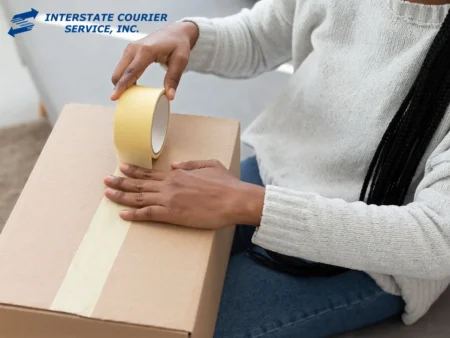
In today’s fast-paced world, courier services have become a cornerstone of business and personal communication, delivering everything from critical documents to precious personal items. Ensuring that these items arrive safely at their destination requires more than just a reliable courier service; it demands careful preparation and packaging. Here’s a comprehensive guide to preparing your package for safe courier delivery, covering everything from selecting the right materials to proper labeling and securing items for transit.
Selecting the Right Packaging Materials
The first step in preparing your package is selecting the right packaging materials. The choice of materials depends on the nature and fragility of the item being shipped. For most items, a sturdy cardboard box is sufficient. However, for fragile or valuable items, consider double-boxing (placing one box inside another with cushioning material in between) to provide extra protection.
Bubble Wrap and Packing Peanuts: Ideal for providing cushioning around your items, these materials help absorb shock during transit. Wrap items individually in bubble wrap, and fill the box with packing peanuts to prevent any movement.
Packing Paper and Foam: For items that might be scratched or scuffed, packing paper can be used as an initial layer of protection, with foam sheets providing additional padding.
Corrugated Inserts: These are perfect for adding extra rigidity to your package, especially for flat items such as framed pictures or documents.
Choosing the Correct Box Size
Using a box that closely matches the size of your item, plus enough room for cushioning materials, is crucial. A box that’s too large can lead to items shifting during transport, while a too-small box might not allow for adequate padding. As a general rule, there should be at least 2 inches of cushioning around each item.
Packing Your Items Properly
Once you have your materials ready, it’s time to pack your items with care:
1. Wrap each item individually in bubble wrap or packing paper, securing the material with tape.
2. Place the heaviest items at the bottom of the box and lighter items on top.
3. Use plenty of cushioning material around and between items to prevent movement. The goal is for the contents to remain stationary if the box is shaken.
4. Fill all spaces within the box to prevent any movement. Any voids can be filled with packing peanuts, crumpled paper, or foam.
Sealing Your Package
A securely sealed package is just as important as the cushioning inside. Use a strong, pressure-sensitive packing tape that’s at least 2 inches wide. Tape all seams and flaps of the box, including the bottom, using the ‘H’ taping method — tape down the middle of the box and across the edges to form an H.
Avoid using string or paper overwrap, as these can get caught in conveyor belts and cause your package to open during transit.
Labeling Your Package
Proper labeling ensures that your package reaches its destination without delays. Here are some tips for effective labeling:
– Use a clear and complete address: Include the recipient’s name, address, and contact number. For added security, place a duplicate label inside the box.
– Remove old labels: If reusing a box, ensure all previous labels and markings are removed or obscured.
– Position the label correctly: Place the shipping label on the top of the package, ensuring it lies flat without wrapping around edges or seams.
– Consider waterproofing: Cover the label with clear tape or use a waterproof label to protect it from moisture.
Special Considerations for Fragile Items
For items that are particularly fragile or valuable, consider the following additional precautions:
– Use “Fragile” stickers: While these won’t guarantee gentle handling, they do alert handlers to the need for care.
– Consider additional insurance: For valuable items, purchasing additional insurance through the courier service can provide peace of mind.
– Take photos before shipping: Documenting the condition of the item before it’s packed can be helpful in the rare event of a dispute.
Final Checklist Before Sending
Before you seal your package for the final time, here’s a quick checklist to ensure everything is in order:
– Double-check the address on the label for accuracy.
– Ensure all items are securely wrapped and cushioned.
– Verify that the package is sealed tightly with no open seams.
– Include a return address both inside and outside the package.
– Keep a receipt or tracking number for future reference.
Ensuring your package is well-prepared for courier delivery is a critical step in safeguarding its contents during transit. By employing the right packaging strategies, selecting appropriate materials, and adhering to best practices for sealing and labeling, you can significantly minimize the risks associated with shipping. When selecting a courier service, particularly for residents and businesses in the Tampa Bay area, opting for a provider like Interstate Courier Service ensures reliability, efficiency, and meticulous handling of your items, guaranteeing their safe arrival at the intended destination. Remember, the diligence you apply in preparing your package reflects the value you place on its contents and the trust you place in your courier service. With the right approach, you can enjoy peace of mind knowing that your shipment is in good hands, all the way from Tampa Bay to its final destination.
Picture Credit: Freepik



